If you want to create composite images of your own, we’ll help you get started. We’ve got some fantastic composite photography ideas. And we’ll show you some of the finest examples of composite photography from exciting modern artists.
What is a Composite Image in Photography?
Composite photography is the art of combining two or more photographs to create one new image. But a composite image isn’t simply one photo layered over another. It’s about blending elements from separate images to create a seamless composite photograph. Double exposure was the only way to produce a composite image with a camera with traditional photography. And we also saw the rise of collage, which combined different images to make new compositions. Digital technology now gives creators more freedom. They can use double exposures and other composition techniques with a few clicks. Artists can combine photos to create amazing composite images using software like Photoshop. Many artists use their own photographs to create composite images. Others take a digital collage approach, taking found materials and creating an original image. If you take the second approach, change the source material to produce something new. Composite photography features elements of fine art, surrealism, and storytelling. It’s a genre that allows the artist to create the impossible. It makes fantasy a reality and brings dreams to life.
7 Composite Image Ideas
Now it’s time to get inspired. We’ve got some excellent composite photography ideas for you to try. And we’ll give you some superb composite image examples from the best modern artists. You’ll have all the inspiration you need to start creating composite images.
1. Duplicate and Multiply Your Subjects
Multiplying your subject is a great way to give your images a surreal twist. It’s a straightforward effect that’s easy to experiment with. It’s the perfect way to start playing around with composite images. Select your scene and get your camera framed for the perfect image. Using a tripod will help keep the camera in the same position for each shot. It will also allow you to create self-portrait composite photos. You can take a series of shots—each one in a different pose. The subject can interact with the scenery in different ways for each shot. Then you bring the photos together for the final image in Photoshop. Natalia Seth gives us the perfect example of a duplicated subject composite image. In the photo below, she has duplicated herself three times in one picture. We see her walking from the house, and each replication is bigger than the last. It’s a simple effect, but it’s illustrative and fun.
2. Create a Double Exposure Effect
In the old days of analog photography, double exposure was one of the only ways to create a composite image. With an analog camera, you expose the same piece of film twice. This creates two images in one. A modern composite photographer has far more options. They can combine two or more photos easily in Photoshop. You overlay the images using a layer mask. Then you adjust the transparency of each photo with a few clicks. All the images in the composite should be visible but with a certain amount of transparency. You want a ghostly and dream-like final image. Andreas Lie is a master of the double exposure effect. His composite images have excellent shape and textures, which give a soft yet clear detail. His animal composites invoke the forest with a sense of mystery.
3. Explore Outer Space
Composite photography and digital collage allow artists to explore the places they’ve always wanted to go. And the surrealist nature of the art means only your imagination can limit the destinations. Outer space is a place of wonder and beauty. It’s somewhere many of us would love to visit. But that’s not an option right now. Composite photography gives us the chance to create images that scratch that itch. Until commercial space travel becomes a reality, at least. Anna Maghradze captures these sentiments perfectly in her digital collage work. Below, her composite image shows a familiar car scene, with the family dog peering out the window. But outside, we see the glory of the universe with stars and galaxies all in view. Anna never combines more than two or three images, preferring to keep things simple. She focuses on the message she wants to portray. And here, we feel her longing for an interstellar road trip. It’s a great way to incorporate your astrophotography.
4. Have Your Subjects Interact with The Composition
We all wish we had power over the weather and the season. We want to part the clouds and change the night to day. In reality, we’re powerless. But composite photography gives us the power to change whatever we want. Composite images often include juxtaposed scenes, like night and day or Earth and space. But another interesting element is to have your subject interact with both. They can be the force that changes the environment and links the two. Joel Robison creates fantasy-infused self-portraits. And in his composite image below, he’s interacting with the world around him by painting over a cloudy sky with a starry night sky. It’s a great example of how the subject can interact with the surreal environment. They’re affecting the change in the final image, revealing the new layer. Characters interacting with the world around them brings the image to life. They become self-aware, and they know they’re in a fantasy world. It’s a fun idea that creates a narrative in your composite photography.
5. Combine Different Landscapes
Landscape photography can be breathtaking. It shows us incredible locations that many of us will never experience in real life. But it’s a genre of photography based very much on reality. Composite photography allows you to create landscapes that ask questions and make heads turn. You can combine different landscapes to make one stunning composite photograph. Charlie Davoli is an artist who loves to combine landscapes, creating new surreal worlds. He often combines familiar scenes from Earth with shots of space. But in the example below, he combines mountainous terrain with a towering cityscape. Each layer mask is blended seamlessly to create a natural scene. Bringing contrasting landscapes together is a great idea for a composite image. But it can also send a message. It can raise questions about our struggling environment. Or it can make predictions about the future.
6. Use Composite Images to Tell a Story
Composite photography gives you plenty of opportunities to include storytelling techniques. You can add visual elements that draw the viewer’s attention and keep it for the next chapter. You can add symbolic elements to the original photo, like animals, objects, and colors. They can be surreal and obscure. But if you select them with purpose, they’ll enhance the meaning of your composition. Use the character of your image to advance the narrative. They can be led down pathways or through doors. A strong composition leads the viewer’s eye, and they’ll follow the subject of the tale you’re telling. Fabiola is an expert storyteller. Her composite photography is full of narrative. And she takes you through a world of make-believe, each scene more magical than the last. Her characters interact with the surreal world around them. It’s a technique that brings the world to life. And she uses visual cues to lead the story along. Her shrunken self steps forth into a book-bound portal. She’s stepping into the story. And the magical imagery makes us want to follow.
7. A Restrained Approach for Minimalist Composites
Composite image-making gives you so much freedom there’s often a temptation to go over the top. It’s easy to add another layer mask and incorporate more details into your photo. But sometimes less is more. And a little restraint can produce some powerful minimalist imagery. Minimalism relies on the power of simplicity. It’s about sharp shapes and clear lines that build a striking composition. You only need to inject a small amount of surrealism to affect your photo strongly. Try adding just one or two foreign elements to your original photo. Kachna Lipa provides us with a perfect example. She uses a stark, two-tone landscape. And the addition of the diver may be a minor addition, but it’s enough to deconstruct the landscape’s reality. The power of the image comes from the simplicity of the composition.
Conclusion
Composite photography is a great way to spread your creative wings and create unique and breathtaking images. It combines digital photography and photo editing to give you unlimited artistic freedom. You can use replication and image blending for stunning effects. Or you can create surreal worlds that tell visual stories. You can fill your composite images with symbolism and action. Or you can take a minimalist approach. I hope these composite image ideas have inspired you to create your own surrealist worlds. Check out The Magical Photography Spellbook for tons of inspiration to create your next composite images!
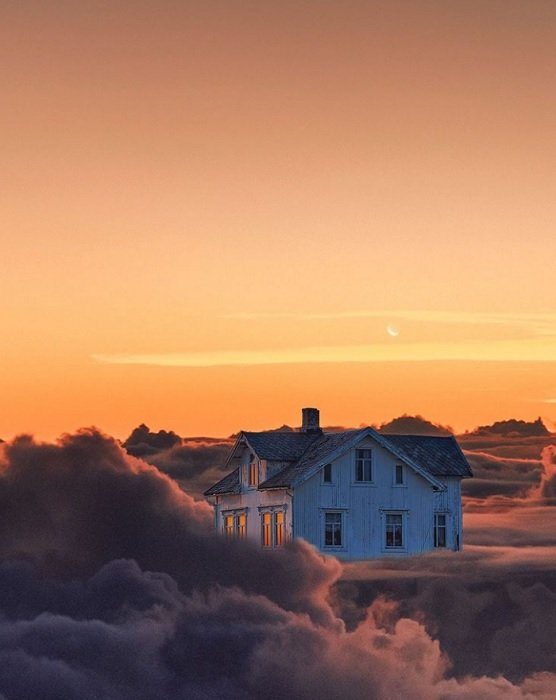


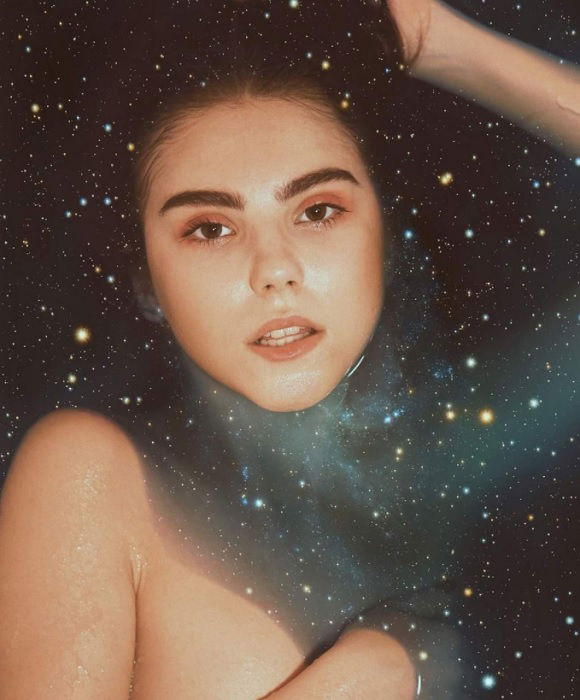
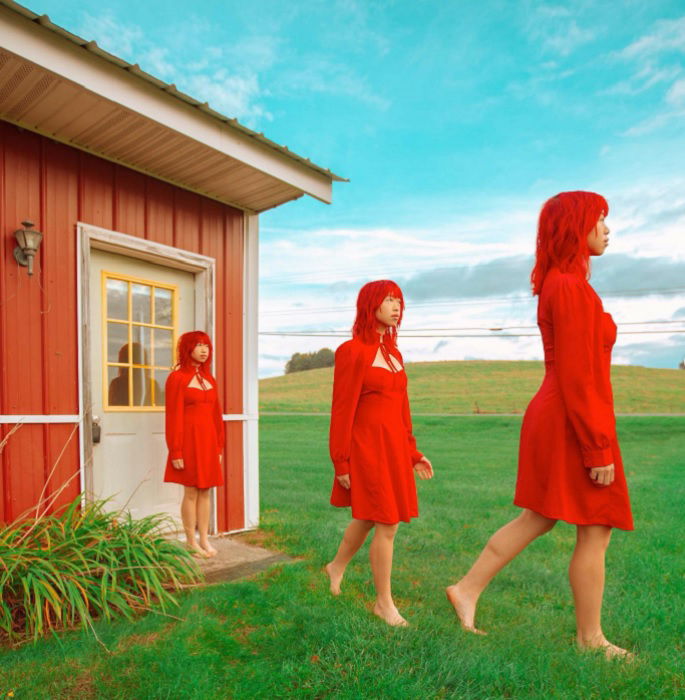
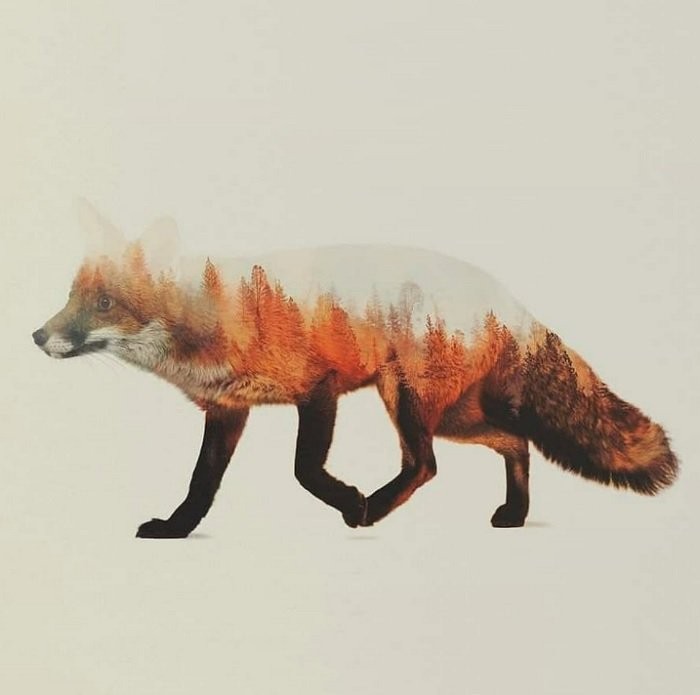
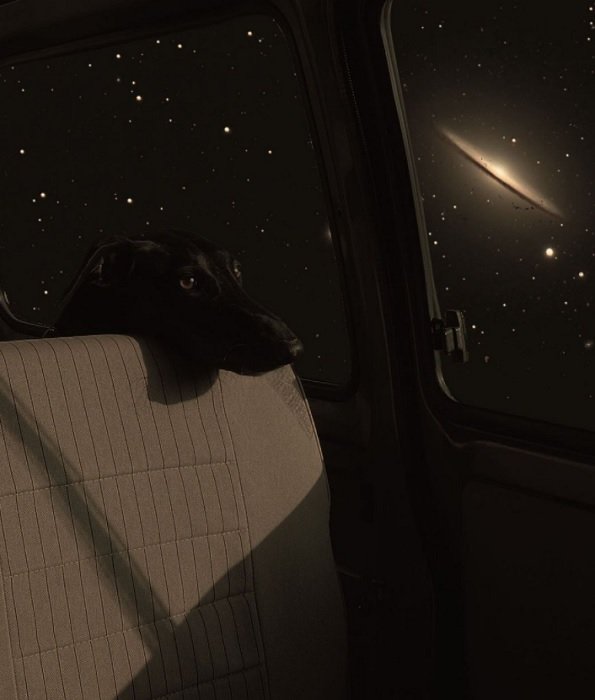
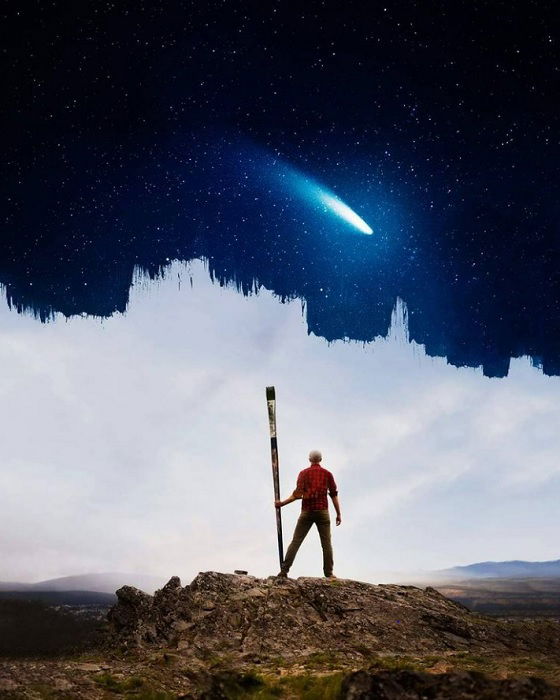
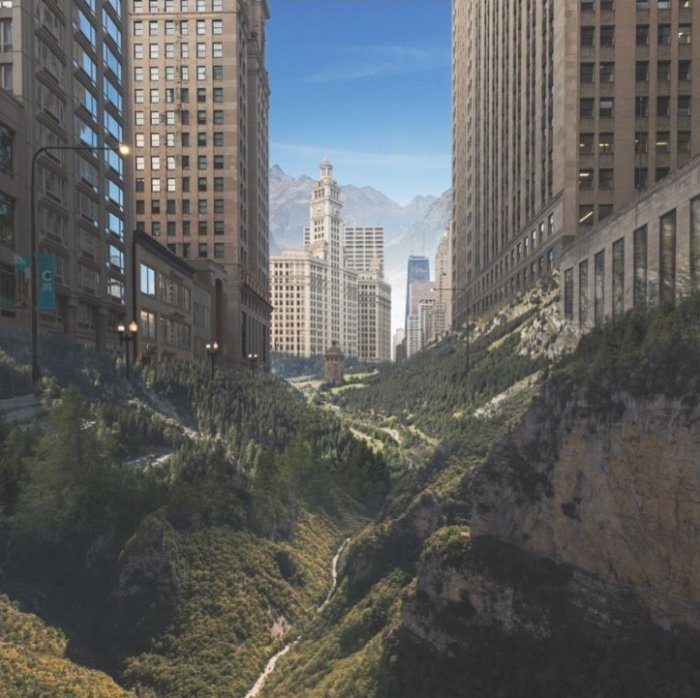
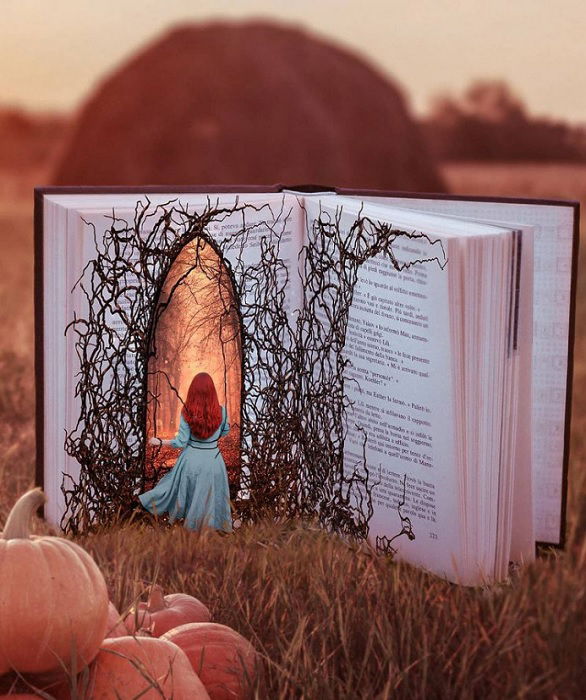
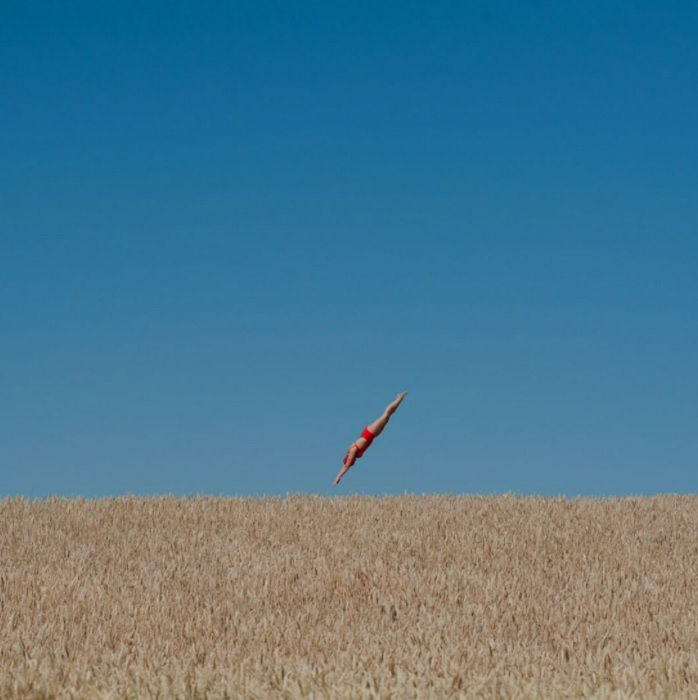
title: “7 Composite Image Ideas For Creative Composite Photography” ShowToc: true date: “2022-12-31” author: “Walter Blount”
If you want to create composite images of your own, we’ll help you get started. We’ve got some fantastic composite photography ideas. And we’ll show you some of the finest examples of composite photography from exciting modern artists.
What is a Composite Image in Photography?
Composite photography is the art of combining two or more photographs to create one new image. But a composite image isn’t simply one photo layered over another. It’s about blending elements from separate images to create a seamless composite photograph. Double exposure was the only way to produce a composite image with a camera with traditional photography. And we also saw the rise of collage, which combined different images to make new compositions. Digital technology now gives creators more freedom. They can use double exposures and other composition techniques with a few clicks. Artists can combine photos to create amazing composite images using software like Photoshop. Many artists use their own photographs to create composite images. Others take a digital collage approach, taking found materials and creating an original image. If you take the second approach, change the source material to produce something new. Composite photography features elements of fine art, surrealism, and storytelling. It’s a genre that allows the artist to create the impossible. It makes fantasy a reality and brings dreams to life.
7 Composite Image Ideas
Now it’s time to get inspired. We’ve got some excellent composite photography ideas for you to try. And we’ll give you some superb composite image examples from the best modern artists. You’ll have all the inspiration you need to start creating composite images.
1. Duplicate and Multiply Your Subjects
Multiplying your subject is a great way to give your images a surreal twist. It’s a straightforward effect that’s easy to experiment with. It’s the perfect way to start playing around with composite images. Select your scene and get your camera framed for the perfect image. Using a tripod will help keep the camera in the same position for each shot. It will also allow you to create self-portrait composite photos. You can take a series of shots—each one in a different pose. The subject can interact with the scenery in different ways for each shot. Then you bring the photos together for the final image in Photoshop. Natalia Seth gives us the perfect example of a duplicated subject composite image. In the photo below, she has duplicated herself three times in one picture. We see her walking from the house, and each replication is bigger than the last. It’s a simple effect, but it’s illustrative and fun.
2. Create a Double Exposure Effect
In the old days of analog photography, double exposure was one of the only ways to create a composite image. With an analog camera, you expose the same piece of film twice. This creates two images in one. A modern composite photographer has far more options. They can combine two or more photos easily in Photoshop. You overlay the images using a layer mask. Then you adjust the transparency of each photo with a few clicks. All the images in the composite should be visible but with a certain amount of transparency. You want a ghostly and dream-like final image. Andreas Lie is a master of the double exposure effect. His composite images have excellent shape and textures, which give a soft yet clear detail. His animal composites invoke the forest with a sense of mystery.
3. Explore Outer Space
Composite photography and digital collage allow artists to explore the places they’ve always wanted to go. And the surrealist nature of the art means only your imagination can limit the destinations. Outer space is a place of wonder and beauty. It’s somewhere many of us would love to visit. But that’s not an option right now. Composite photography gives us the chance to create images that scratch that itch. Until commercial space travel becomes a reality, at least. Anna Maghradze captures these sentiments perfectly in her digital collage work. Below, her composite image shows a familiar car scene, with the family dog peering out the window. But outside, we see the glory of the universe with stars and galaxies all in view. Anna never combines more than two or three images, preferring to keep things simple. She focuses on the message she wants to portray. And here, we feel her longing for an interstellar road trip. It’s a great way to incorporate your astrophotography.
4. Have Your Subjects Interact with The Composition
We all wish we had power over the weather and the season. We want to part the clouds and change the night to day. In reality, we’re powerless. But composite photography gives us the power to change whatever we want. Composite images often include juxtaposed scenes, like night and day or Earth and space. But another interesting element is to have your subject interact with both. They can be the force that changes the environment and links the two. Joel Robison creates fantasy-infused self-portraits. And in his composite image below, he’s interacting with the world around him by painting over a cloudy sky with a starry night sky. It’s a great example of how the subject can interact with the surreal environment. They’re affecting the change in the final image, revealing the new layer. Characters interacting with the world around them brings the image to life. They become self-aware, and they know they’re in a fantasy world. It’s a fun idea that creates a narrative in your composite photography.
5. Combine Different Landscapes
Landscape photography can be breathtaking. It shows us incredible locations that many of us will never experience in real life. But it’s a genre of photography based very much on reality. Composite photography allows you to create landscapes that ask questions and make heads turn. You can combine different landscapes to make one stunning composite photograph. Charlie Davoli is an artist who loves to combine landscapes, creating new surreal worlds. He often combines familiar scenes from Earth with shots of space. But in the example below, he combines mountainous terrain with a towering cityscape. Each layer mask is blended seamlessly to create a natural scene. Bringing contrasting landscapes together is a great idea for a composite image. But it can also send a message. It can raise questions about our struggling environment. Or it can make predictions about the future.
6. Use Composite Images to Tell a Story
Composite photography gives you plenty of opportunities to include storytelling techniques. You can add visual elements that draw the viewer’s attention and keep it for the next chapter. You can add symbolic elements to the original photo, like animals, objects, and colors. They can be surreal and obscure. But if you select them with purpose, they’ll enhance the meaning of your composition. Use the character of your image to advance the narrative. They can be led down pathways or through doors. A strong composition leads the viewer’s eye, and they’ll follow the subject of the tale you’re telling. Fabiola is an expert storyteller. Her composite photography is full of narrative. And she takes you through a world of make-believe, each scene more magical than the last. Her characters interact with the surreal world around them. It’s a technique that brings the world to life. And she uses visual cues to lead the story along. Her shrunken self steps forth into a book-bound portal. She’s stepping into the story. And the magical imagery makes us want to follow.
7. A Restrained Approach for Minimalist Composites
Composite image-making gives you so much freedom there’s often a temptation to go over the top. It’s easy to add another layer mask and incorporate more details into your photo. But sometimes less is more. And a little restraint can produce some powerful minimalist imagery. Minimalism relies on the power of simplicity. It’s about sharp shapes and clear lines that build a striking composition. You only need to inject a small amount of surrealism to affect your photo strongly. Try adding just one or two foreign elements to your original photo. Kachna Lipa provides us with a perfect example. She uses a stark, two-tone landscape. And the addition of the diver may be a minor addition, but it’s enough to deconstruct the landscape’s reality. The power of the image comes from the simplicity of the composition.
Conclusion
Composite photography is a great way to spread your creative wings and create unique and breathtaking images. It combines digital photography and photo editing to give you unlimited artistic freedom. You can use replication and image blending for stunning effects. Or you can create surreal worlds that tell visual stories. You can fill your composite images with symbolism and action. Or you can take a minimalist approach. I hope these composite image ideas have inspired you to create your own surrealist worlds. Check out The Magical Photography Spellbook for tons of inspiration to create your next composite images!










